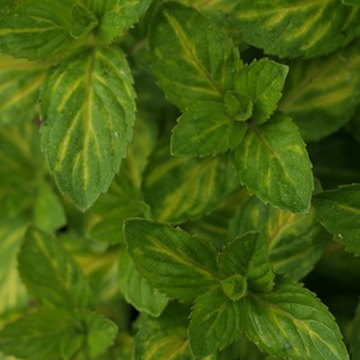
Therefore, regardless of the types of mint grown, care should be taken in keeping these plants under control - preferably with the use of containers.
Mint leaves edible full#
They like full sun to partial shade and most prefer moist but well-draining soil.Īnother aspect that most mint types have in common is their invasive tendency. Most types of mint require the same, or similar, growing conditions.
Mint leaves edible how to#
Keep reading for information on how to grow some of these different varieties of mint. However, a number of these mint types are commonly grown in the garden. There are literally hundreds of mint plant varieties and far too many to name here.

To find a variety of ideas for using mint that will work for this variety as well, check out these recipes from our sister site, Foodal.Mint is a fast-growing, aromatic herb plant in the Mentha genus. Think about using it in savory dishes too, such as lamb or fish.Īnd since it’s such a fragrant herb, why not add it to potpourri, or use the plant as a natural pesticide against mice, ants, mosquitoes, and more!

If you’re looking for more healthy ways to enjoy your new herb, you can add it to a variety of salads, including fruit salads. Add it to cocktails as a muddled herb or garnish. Jazz up a hot chocolate with fresh sprigs or dried crushed flakes. In fact, chocolate mint can be used in a variety of hot and cold drinks. Add a few crushed dried leaves to your coffee grinds before percolating to add an extra layer of flavor to your brew. Use it to make a refreshing hot or cold tea. The versatility of this plant, and mint in general, is amazing. Strain the leaves and use this in recipes or even as a massage oil. Fill the jar with oil and set in a warm place such as in a sunny windowsill for at least five days. Preserve the essence of the flavor by soaking the leaves in oil, whether almond, coconut, or olive, to infuse with the minty, chocolatey smell.Ĭrush fresh or dried leaves and pack into a jar. Or you can freeze them in ice cubes to add to drinks later. You can dry bundles that you’ve harvested by hanging them upside down in a dry, warm place away from direct sunlight.įreeze the leaves by laying them out on a cookie sheet, popping it in the freezer until the leaves are crisp and frozen, putting them in sealed bags, and keeping the bags in the freezer. Leaves are great used fresh, but I’ve found they will retain most of their scent and flavor after they’ve been dried, infused, or frozen for later use too!įresh cut sections may be stored in the fridge for about four days. The minty flavor is at its peak just before blooming and early in the morning, but it will maintain its distinctive smell and taste throughout the growing season. More sun results in the best taste and color.Ĭutting back the stems in bunches will help keep the plant under control, and encourage bushier growth. It grows best with at least five to six hours of sun a day, preferably up to 14 if it’s available.

Like all plants though, it has its preferences. How to GrowĬhocolate mint is a fast growing, easy plant to have in the garden. Luckily, these plants are easily propagated by cuttings, runners, layering, or plant division.įor detailed instructions on each of these methods, check out our article on how to grow and care for peppermint. Good to know, and I say this from experience because in the past I’ve purchased my fair share of “peppermint” seeds only to be disappointed with the smell and taste of the resulting plant. PropagationĪs a sterile hybrid, peppermint and its cultivars cannot be propagated by seed. The small lavender flowers attract all sorts of bees and butterflies, and the occasional appreciative human. It grows deep green leaves with purple undersides and dark stems, and is hardy in Zones 3 to 9. This cultivar has a dark look compared to the bright leaves of peppermint. Its cool peppermint scent, layered with that warm, salivation-inducing, sweet undertone won over the breeders and gardeners. ‘Chocolate’ was one of the resulting cultivars.

The form citrata, also known as orange mint, was selected for further development. The result was a sterile hybrid we all know and love: M.


 0 kommentar(er)
0 kommentar(er)
